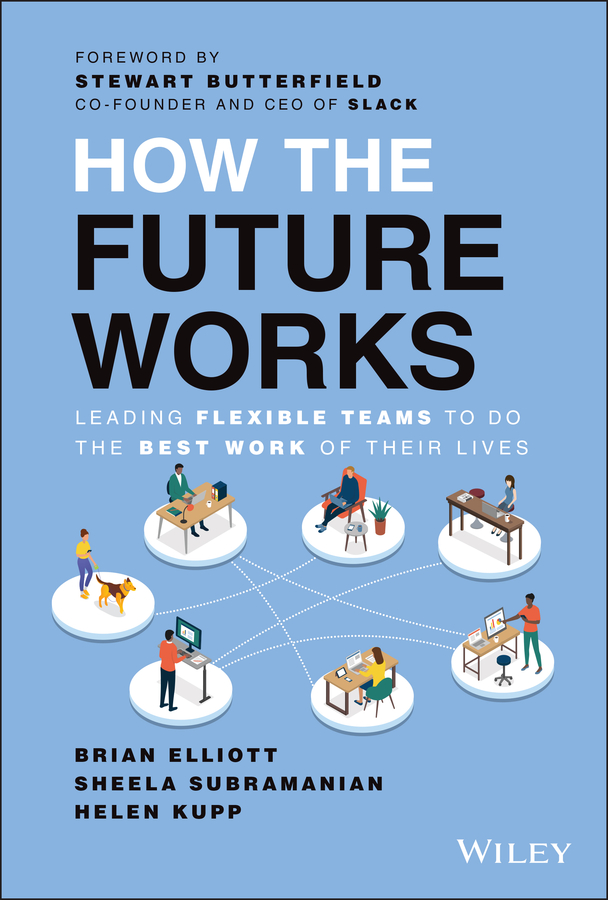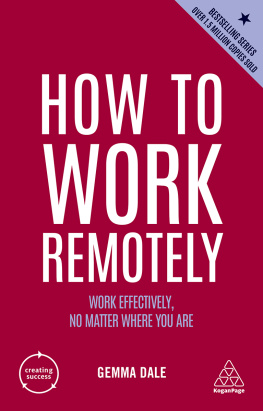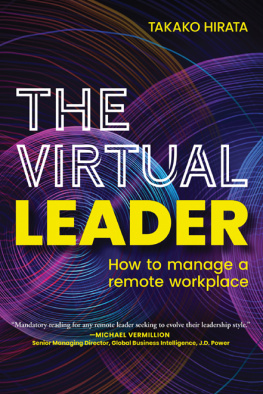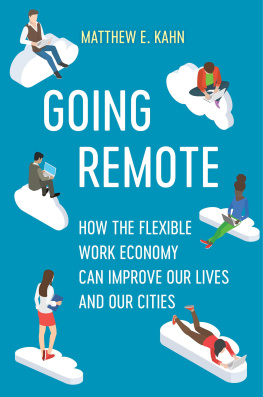
Table of Contents
List of Illustrations
- Why Flexible Work Works
- Chapter 1
- Chapter 2
- Chapter 4
- Chapter 5
- Chapter 6
- Chapter 7
- Resources: Your Future of Work Toolkit
Guide
Pages
Praise forHow the Future Works: The 7 Steps to Getting There
We have arrived at a moment where we can backslide into the status quo or transform society for generations to come. How the Future Works makes the latter possible -- providing us with a blueprint to deeply consider the future of work. It is a must-read for today's leaders.
Indra Nooyi, former CEO, PepsiCo and author of My Life in Full
We know flexibility is the future of workthe big question is how it's going to work. This book combines the latest data with actionable advice on giving people more freedom without settling for less excellence.
Adam Grant, #1 New York Times bestselling author of Think Again and host of the TED podcast WorkLife
How the Future Works uncovers the key principles for building a culture that connects, supports and inspires every employee in this new all-digital, work-from-anywhere world. It's an essential guidebook for transforming the way people work and unlocking their potential.
Marc Benioff, Chair and Co-CEO, Salesforce
I pay attention to the Future Forum. And if you're interested in folks who take in gobs of data, listen, ask useful questions, and make helpful judgements on how we might work now, you might too.
Priya Parker, author of The Art of Gathering: How We Meet and Why It Matters
CEOs confront few topics as complex, urgent, and strategically important as the future of work in a post-pandemic, increasingly digitized world. Brian, Sheela, and Helen highlight pitfalls, provide insight and practical advice to help guide leaders through these choices, and put us on a path to improve work for the benefit of our people and our organizations.
Rich Lesser, Global Chair, Boston Consulting Group
The disruption to work ushered in the era for flexible work forcefully. This insightful book provides a framework with examples for successfully implementing flexible, diverse, and inclusive cultures.
Tsedal Neeley, Professor, Harvard Business School and author of Remote Work Revolution and co-author of The Digital Mindset.
At a time when the fundamental nature of how and where we work is changing, organizations of all sizes need guidance on navigating what has become a brave new world of work. How the Future Works artfully weaves together research, principles and storytelling to help leaders unlock the power of flexible work.
Arvind Krishna, Chairman and CEO of IBM
How the Future Works is as valuable as it is much needed for today's executive. The book is excellently conceived, organized and written. Plus, with the checklist at each chapter's end and the tool kit at the book's closing, it's very easy to turn this into an action plan. Bravo!
Alan Murray, CEO, FORTUNE
How the Future Works is an incredible resource for business leaders as we navigate seismic changes in today's workplace. The founders of the Future Forum are helping to answer some of the bigger questions we're facing as we reimagine work and create new ways of working that can better serve both employees and employers.
Tracy Layney, Senior Vice President and Chief Human Resources Officer, Levi Strauss & Co.
How the Future Works builds a very strong business case to reset how we think about flexibility, resulting in a better, more sustainable work model for both employees and organizations. It provides practical guidance and resources to think through where, when, and how work gets done and most importantly, why flexibility makes strategic sense. An excellent read for leaders who are re-imagining the future of work post-pandemic, amidst a very competitive talent marketplace.
Helena Gottschling, Chief Human Resource Officer, Royal Bank of Canada
HOW THE FUTURE WORKS
LEADING FLEXIBLE TEAMS TO DO THE BEST WORK OF THEIR LIVES
BRIAN ELLIOTT
SHEELA SUBRAMANIAN
HELEN KUPP

Copyright 2022 by Brian Elliott, Sheela Subramanian, Helen Kupp. All rights reserved.
Published by John Wiley & Sons, Inc., Hoboken, New Jersey.
Published simultaneously in Canada.
No part of this publication may be reproduced, stored in a retrieval system, or transmitted in any form or by any means, electronic, mechanical, photocopying, recording, scanning, or otherwise, except as permitted under Section 107 or 108 of the 1976 United States Copyright Act, without either the prior written permission of the Publisher, or authorization through payment of the appropriate per-copy fee to the Copyright Clearance Center, Inc., 222 Rosewood Drive, Danvers, MA 01923, (978) 750-8400, fax (978) 646-8600, or on the Web at www.copyright.com. Requests to the Publisher for permission should be addressed to the Permissions Department, John Wiley & Sons, Inc., 111 River Street, Hoboken, NJ 07030, (201) 748-6011, fax (201) 748-6008, or online at http://www.wiley.com/go/permissions.
Limit of Liability/Disclaimer of Warranty: While the publisher and authors have used their best efforts in preparing this work, they make no representations or warranties with respect to the accuracy or completeness of the contents of this work and specifically disclaim all warranties, including without limitation any implied warranties of merchantability or fitness for a particular purpose. No warranty may be created or extended by sales representatives, written sales materials or promotional statements for this work. The fact that an organization, website, or product is referred to in this work as a citation and/or potential source of further information does not mean that the publisher and authors endorse the information or services the organization, website, or product may provide or recommendations it may make. This work is sold with the understanding that the publisher is not engaged in rendering professional services. The advice and strategies contained herein may not be suitable for your situation. You should consult with a specialist where appropriate. Further, readers should be aware that websites listed in this work may have changed or disappeared between when this work was written and when it is read. Neither the publisher nor authors shall be liable for any loss of profit or any other commercial damages, including but not limited to special, incidental, consequential, or other damages.
For general information on our other products and services or for technical support, please contact our Customer Care Department within the United States at (800) 762-2974, outside the United States at (317) 572-3993 or fax (317) 572-4002.
Wiley publishes in a variety of print and electronic formats and by print-on-demand. Some material included with standard print versions of this book may not be included in e-books or in print-on-demand. If this book refers to media such as a CD or DVD that is not included in the version you purchased, you may download this material at http://booksupport.wiley.com. For more information about Wiley products, visit www.wiley.com.
Library of Congress Cataloging-in-Publication Data
Next page









